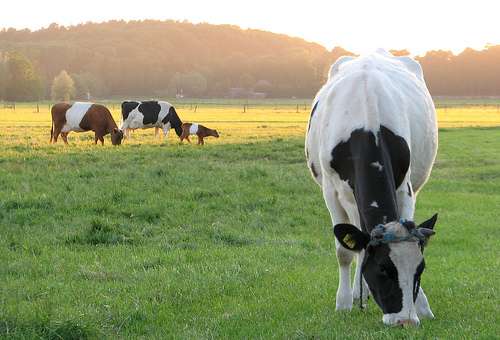Livestock feeding review reveals opportunity for better industry practice

A better understanding of factors that influence feeding behaviours in ruminants could help improve management practices and provide better outcomes for the livestock industry.
Local researchers reviewed previous literature to determine how the integration of signals arising from the reward feeding system and metabolic regulation influence food selection and intake in domestic livestock.
CSIRO livestock researcher Dr Dean Revell says the research was designed to present a framework that showed how two major feeding regulatory systems, a reward system and homeostatic regulation, interact to influence feeding behaviour.
"What we tried to do was explain that there is really two forces at play and that they are absolutely linked," he says.
"Any given feeding behaviour reflects the current motivation of an individual; that motivation is a consequence of the integration over time of many factors including sensorial, metabolic and physiological signals.
"These things influence the decisions an animal makes about what it eats and therefore, with a grazing animal, where it goes as well.
"I guess on a more practical level once you understand that then you can identify ways in which you can influence things to modify eating behaviours in these animals for the better."
Dr Revell says a better understanding of the complex regulation of feeding behaviours can help promote feeding practices that optimise performance, resource use and welfare of grazing livestock.
Self-herding option being investigated
"One application we're working on is a procedure called self-herding, using nutritional attraction to influence animals grazing behaviours in the rangelands of WA" he says.
"We can trigger the signals an animal gets to expect a reward—on the basis of their sensory perceptions of sight, smell and taste—to reinforce the motivation to consume a particular food."
"The animals can quickly learn an association between those cues and the metabolic and nutritional outcomes of consuming that particular food.
"We're using that in the rangelands to either retain animals in an area or encourage them to move into a new area."
Dr Revell says linking early experiences during pregnancy and early life—'metabolic memory' or 'foetal programming'—was also a key aspect of the review.
"There is evidence to suggest that metabolic signals received in the womb of the mother can be passed onto that offspring and shape how they perform into the future," he says.
"That's pretty amazing and a neat management tool as well."
More information: "Feeding behaviour in ruminants: a consequence of interactions between a reward system and the regulation of metabolic homeostasis." Animal Production Science 55(3) 247-260 dx.doi.org/10.1071/AN14481
Provided by Science Network WA



















